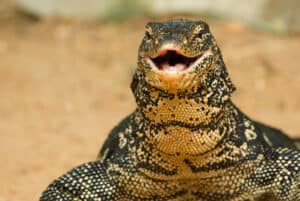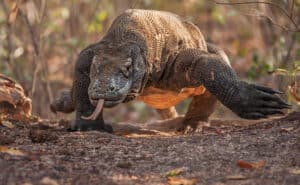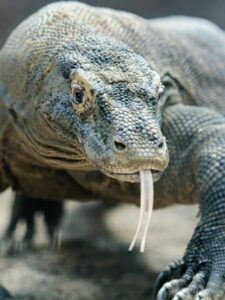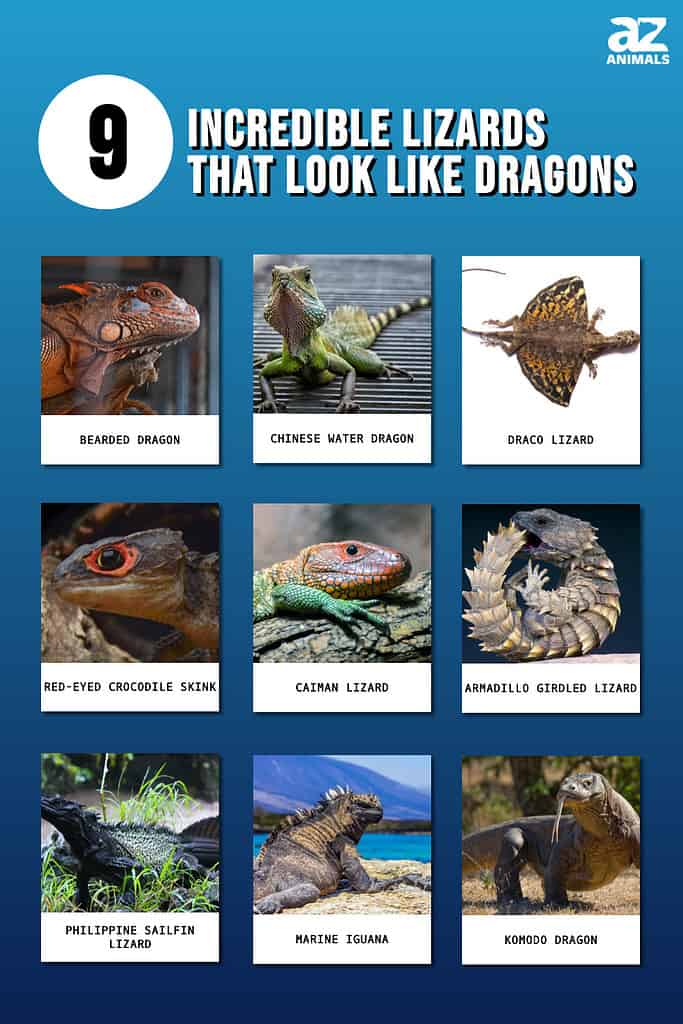
In this list, you will find 10 awesome lizards that look like dragons. Dragons have been depicted in different cultures around the world, and have been a popular concept for thousands of years. Even today in movies and other media dragons are still beloved mythical creatures that we just can’t get enough of. It is no question that lizards, snakes, and other reptiles are a big inspiration for the fire-breathing menaces we call dragons.
We do not have to look in the pages of a fairy tale to find a dragon but can spot them around the world living in the wilderness. Dragons are a creature built from imagination, but real animals exist that have helped humans create these mythical reptiles. Here are 10 lizard species that look similar to dragons.
1. Bearded Dragon
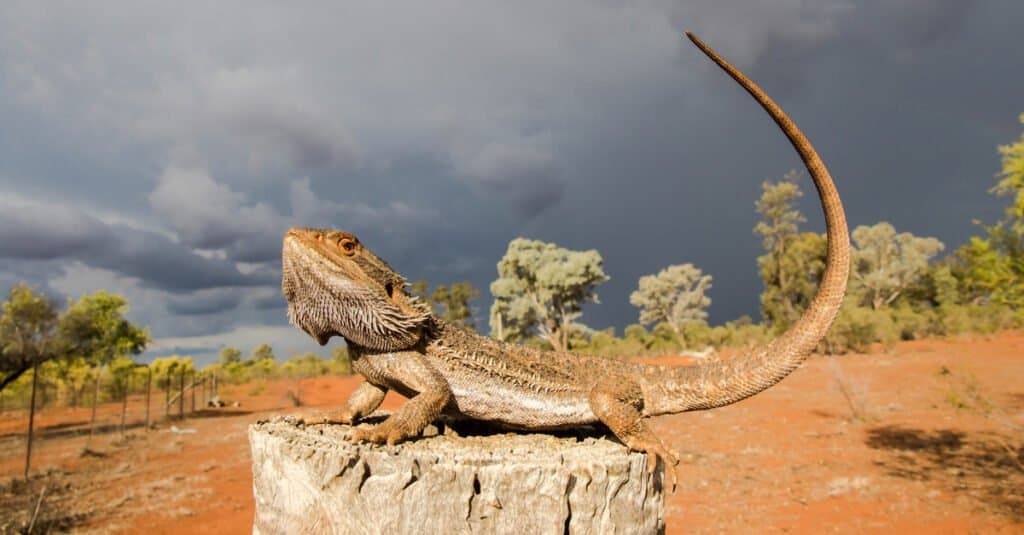
Bearded Dragon basking on a rock
©Ken Griffiths/Shutterstock.com
Living in the deserts, woodlands, and savanna habitats of Australia, the bearded dragon (Pogona) is now a popular pet lizard species that is found across the world. This lizard gets its name from the beard of spikes that appear under its neck. When in danger or angry bearded dragons will puff off the spikes around their neck to make themselves look more threatening. Along with the spikes on their neck, they also run down their body like actual dragons.
Six species of bearded dragons exist all located in Australia.
Bearded dragons are one of the most popular reptile pets, coming in a variety of colors and sizes. They are a docile breed that calms as it ages and enjoys interactions with humans. Insects and plants make up a majority of this species’ diet. If you ever wanted to own a pet dragon, the bearded dragon is a great choice for knowledgeable reptile owners.
2. Chinese Water Dragon
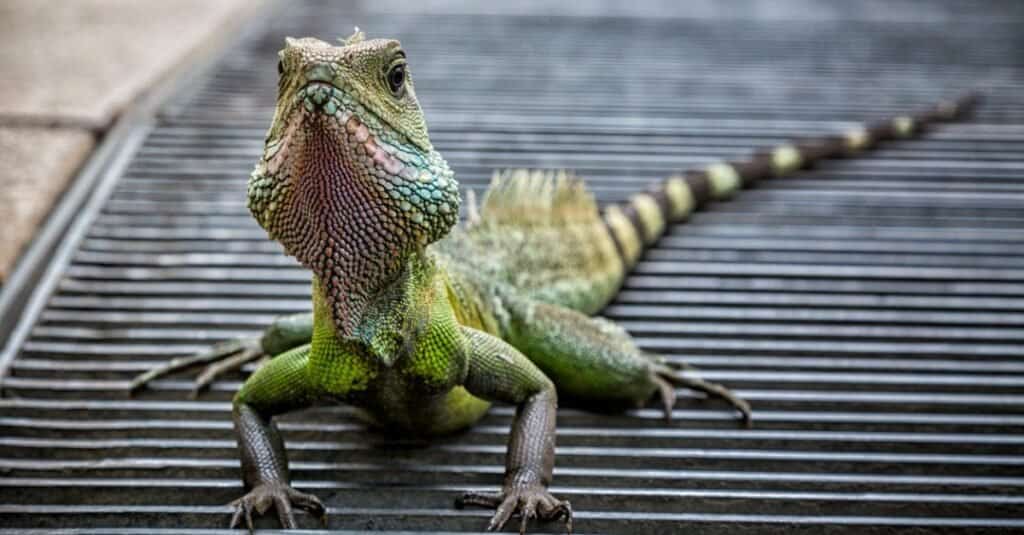
Water Dragon in Kew Gardens London. Water dragons are one of the best lizards for a novice to take care of.
©iStock.com/Nigel Jarvis
The Chinese water dragon (Physignathus cocincinus) is a species native to east China but also inhabits areas in Thailand, Cambodia, Burma, Laos, and Vietnam. Forests, next to freshwaters like lakes and streams are the habitats they live in. Also a popular pet species, most of the lizards in captivity are wild-caught. Chinese water dragons face population decline from the constant capturing of them in the wild and the destruction of their habitat.
Green is the most common color for this species, and they range from light to dark green with brown bands on their tail. Rough scales cover their body, and for males, more spikes cover their bodies. Chinese water dragons feed on insects and are well known for their ability to swim. To escape a predator they will dive into the water and are capable of staying underwater for around 90 minutes.
3. Flying Dragon Lizards
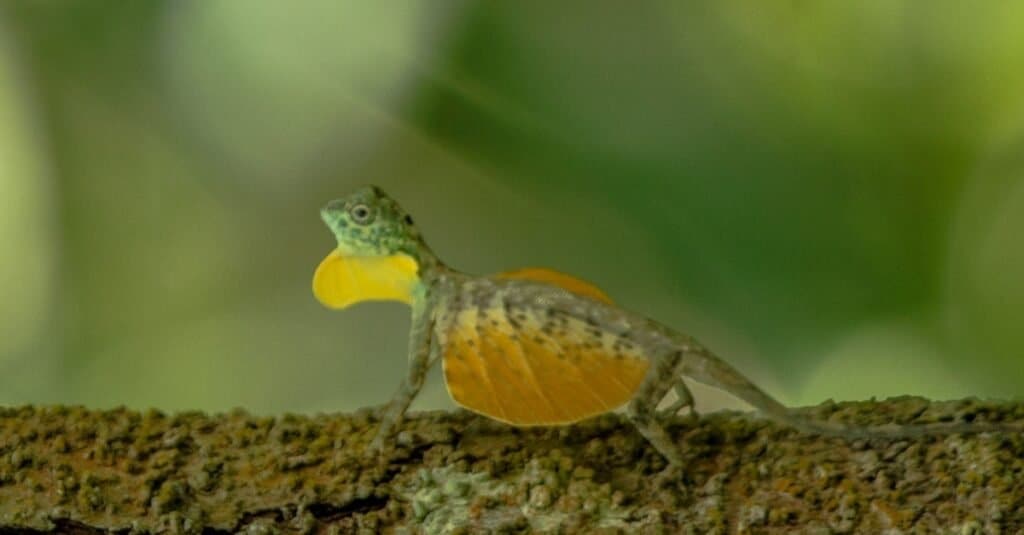
Draco volans, the common flying dragon on the tree in Tangkoko National Park, Sulawesi, is a species of lizard endemic to Southeast Asia
©iStock.com/Jiri Hrebicek
Draco Lizards (Draco volans) are also known as the flying dragon. This lizard species is small in size, only growing up to 8.4 inches long, but is able to take flight like a dragon. There are around 40 species of Draco lizards. Blue, red, brown, and orange are the colors they appear in. Flying from tree to tree is what this species spends most of its time doing. They will escape predators, hunt for insects, or chase down other lizards in their territory.
Draco lizards rarely go to the ground, but females will go there to deposit eggs into the soil. In the Philippines, this species is found in wooded areas and is an abundant lizard to find. Ants and termites make up the majority of their diet. While not large like a dragon, the Draco lizard is as close as it gets to a real-life baby dragon.
4. Red-eyed Crocodile Skink
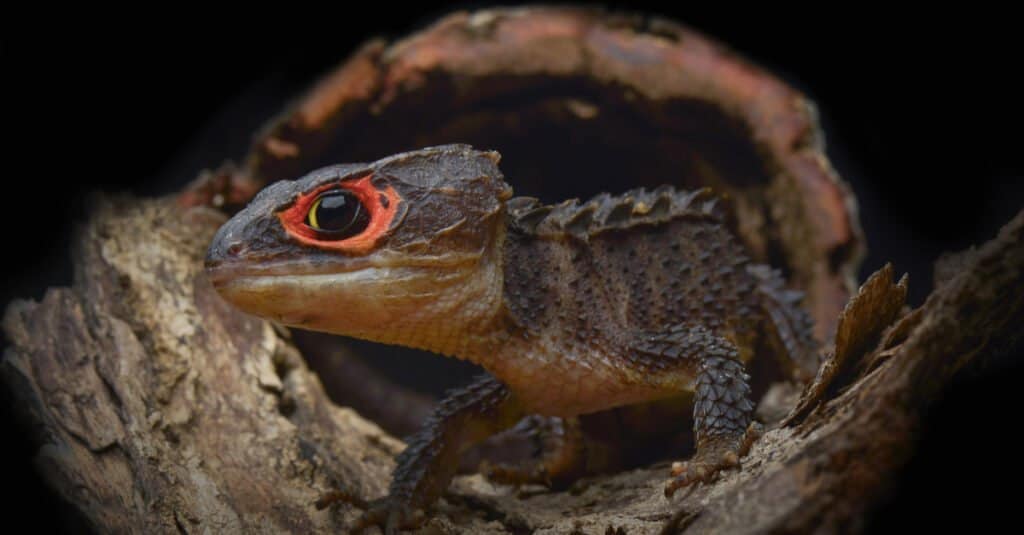
Crocodile
skinks are named after the red patch around their eye
©DWI YULIANTO/Shutterstock.com
The red-eyed crocodile skink (Tribolonotus gracilis) is a small species, only reaching 7 to 9 inches long. Their look and size are what make them popular pets, and they are also capable of living up to 10 years. Red markings appear around this species’ eyes, and they have a body like a dragon.
Red-eyed crocodile skinks have a similar diet to other small lizards including foods like:
Originally from the islands of New Guinea, Red-eyed crocodile lizards inhabit the forest floor in hot and humid environments.
5. Northern Caiman Lizard
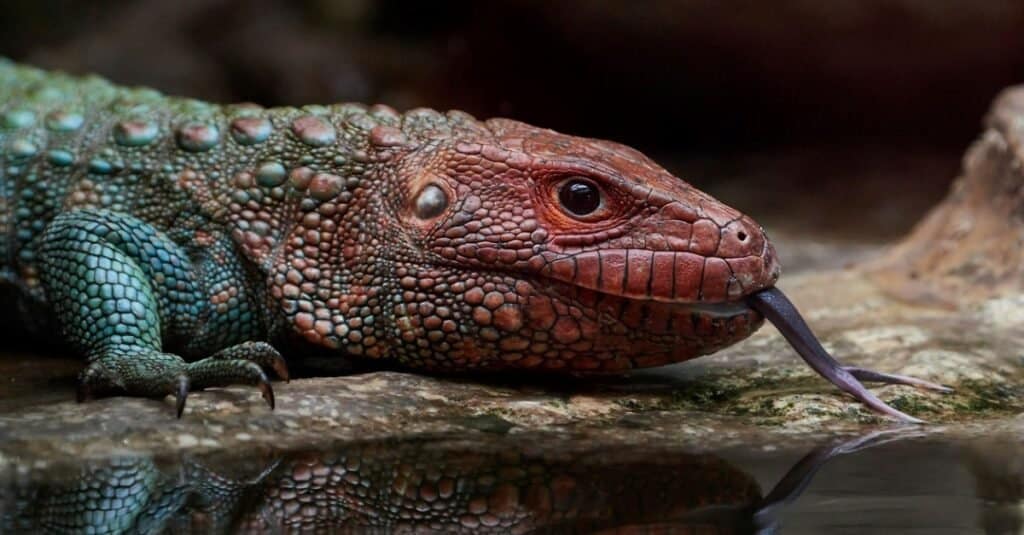
Northern caiman lizard sitting on a rock. Caiman Lizards are one of the best lizards for beginners.
©iStock.com/Denja1
Caiman lizards (Dracaena guianensis) are a semi-aquatic lizards, painted in beautiful colors. Their head is red to orangish, and their body is tropical green. Caiman lizards will grow around 2 to 4 inches and weigh around 10 lbs.
Swampy habitats in South America are where this species lives, spending its time on land and water. If in danger they will retreat into the water and have a third eyelid to help them see underwater. Large scales cover this species’ body that acts as armor to help them when attacked.
Caiman lizards have large heads and sharp teeth. Snails, crawfish, turtles, and claws are the food they eat. Their powerful jaws help them bite through hard shells, but they will eat the soft part of the animals they prey on. Active during the day, at night they will bask in water or in trees.
6. Armadillo Girdled Lizard
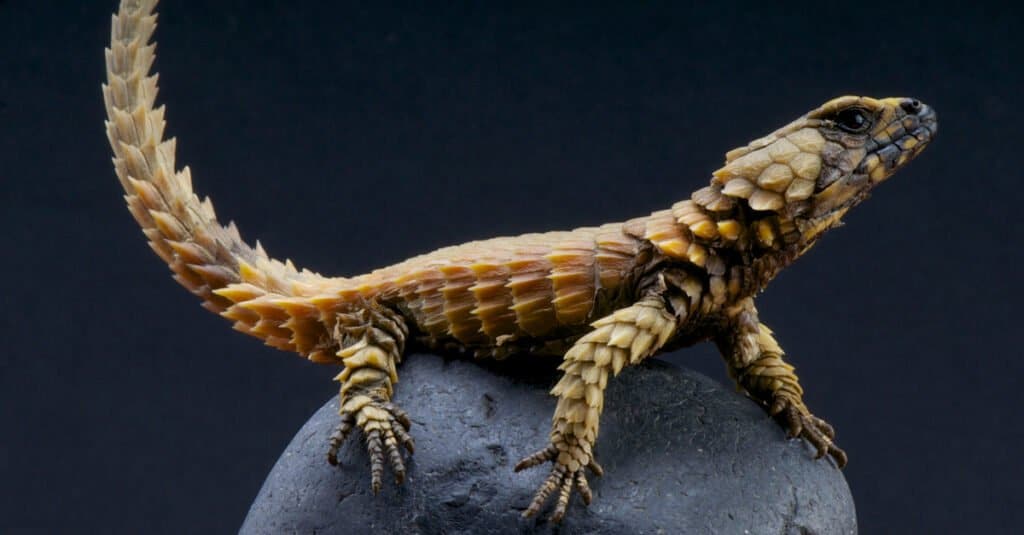
Armadillo
girdled lizards look like dragons with their spiky exterior!
©reptiles4all/Shutterstock.com
In South Africa, it is possible to come across a small armored lizard species hiding in the deserts along the western coast of the country. Armadillo Girdled Lizards (Ouroborus cataphractus) is a dragon-like species that also have similar traits to an armadillo. To protect itself from predators this species will roll into a ball by putting its tail into its mouth. Thick scales and spikers cover their body for protection. Being a similar color to sand, they are able to effectively blend into their environment. While only growing 3.5 inches at max length, their sharp features and body shapes give them a similar appearance to a dragon.
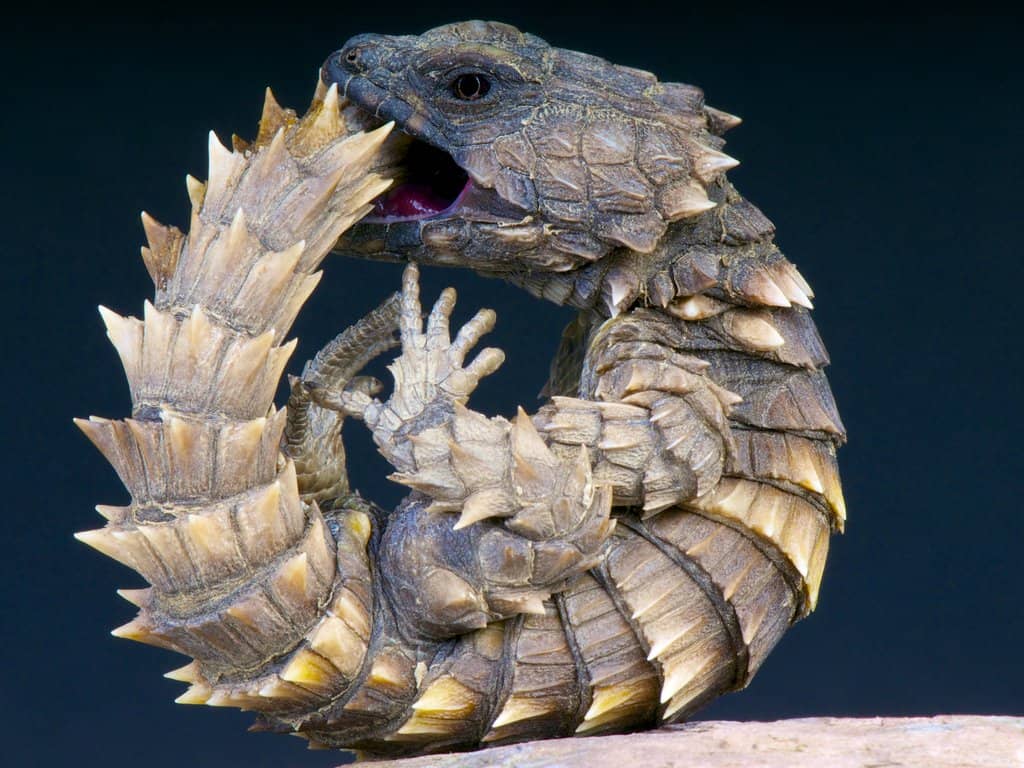
Armadillo Girdled lizards roll into a ball to defend themselves like an armadillo.
©reptiles4all/Shutterstock.com
Small insects and spiders are what armadillo-girdled lizards will commonly prey on. They are active during the day and will live in groups ranging from 30 to 60 members. A popular pet species for its armored look, they are rare to come across in the pet trade.
7. Philippine Sailfin Lizard
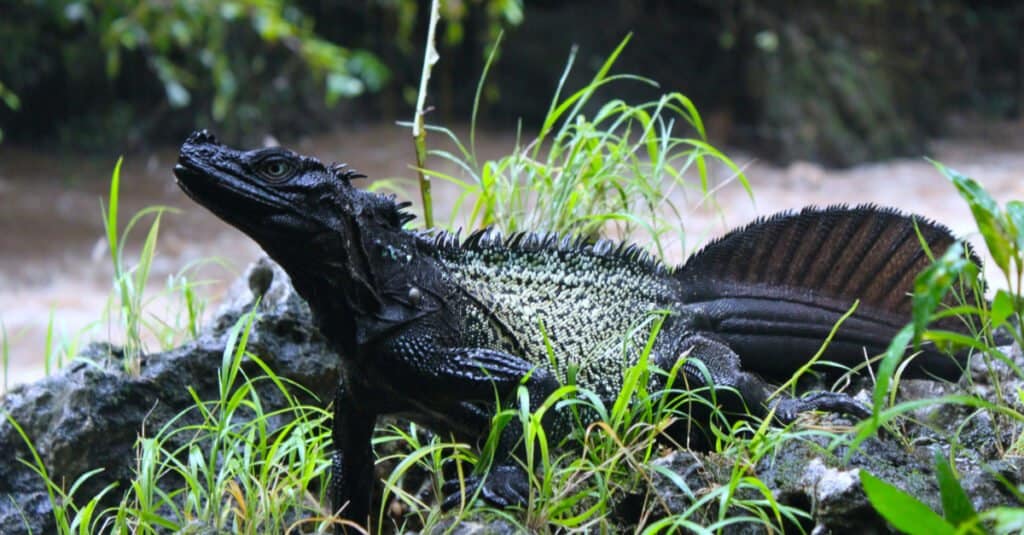
The tail and webbed feet of the Saifilin Dragon make them excellent swimmers
©Andi Siady Hamzah/Shutterstock.com
Sailfin water lizards (Hydrosaurus pustulatus) are also called the soa-soa water lizard and crested lizards. This species is found on several islands in the Philippines. They are great swimmers, and juvenile lizards are capable of running atop water due to their body structure.
As water dragons, they have optimized for water, and have a unique sailfin near their tail that helps them swim, and also makes them look like modern-day dragons.
Oftentimes this species is found hanging from trees and will dive into the water to avoid predators. Covering their skin is a blotchy green or yellow pattern that helps them camouflage. Tropical wooded areas near rivers are the habitats they live in, but the destruction of their home has caused this species to become endangered.
8. Marine Iguana
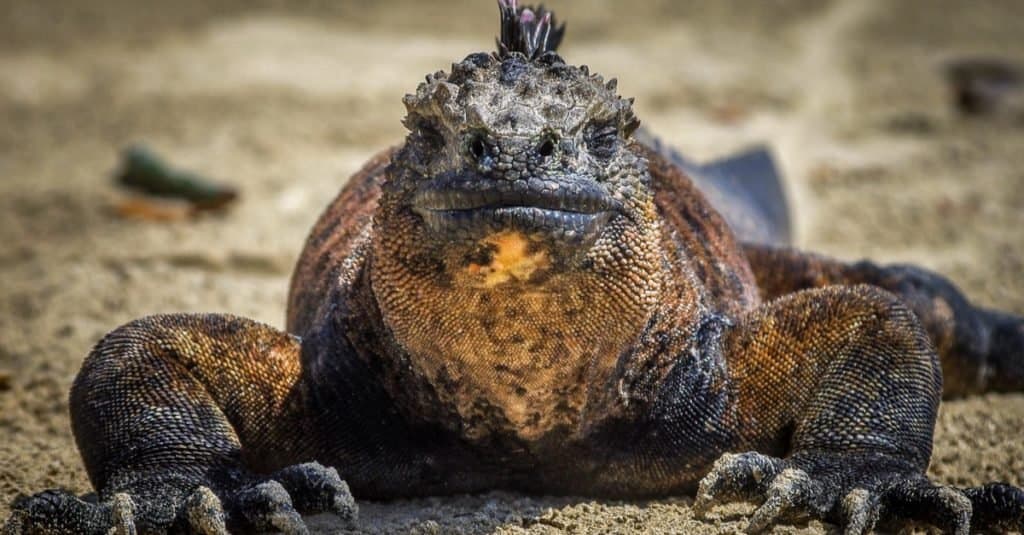
The Marine Iguana, also known as the Galápagos Marine Iguana, is a species of Iguana found only on the Galápagos Islands ( Ecuador)
©Original Mostert/Shutterstock.com
Native to the islands of the Galapagos, marine iguanas (Amblyrhynchus cristatus) are the only marine lizard species in the world. This species is believed to have evolved from land iguanas to be able to traverse into the ocean’s waters. Saltwater is not a problem for this species as they are able to consume it and expel the excess salt from their bodies.
Black is the most common color for this species, and large spikes can be seen running down their back. Marine Iguanas are covered in rough scales and have a hardened look, making them look similar to a dragon. Their claws hands are large and equipped with sharp claws.
Marine Iguanas are not able to breathe underwater, but they are able to hold their breath and dive for around 30 to 40 minutes. The sharp claws make this lizard look fearsome, but they use them to feed on algae they find while diving. Bright colors like blues, reds, and greens are portrayed by male iguanas during mating season.
9. Komodo Dragon
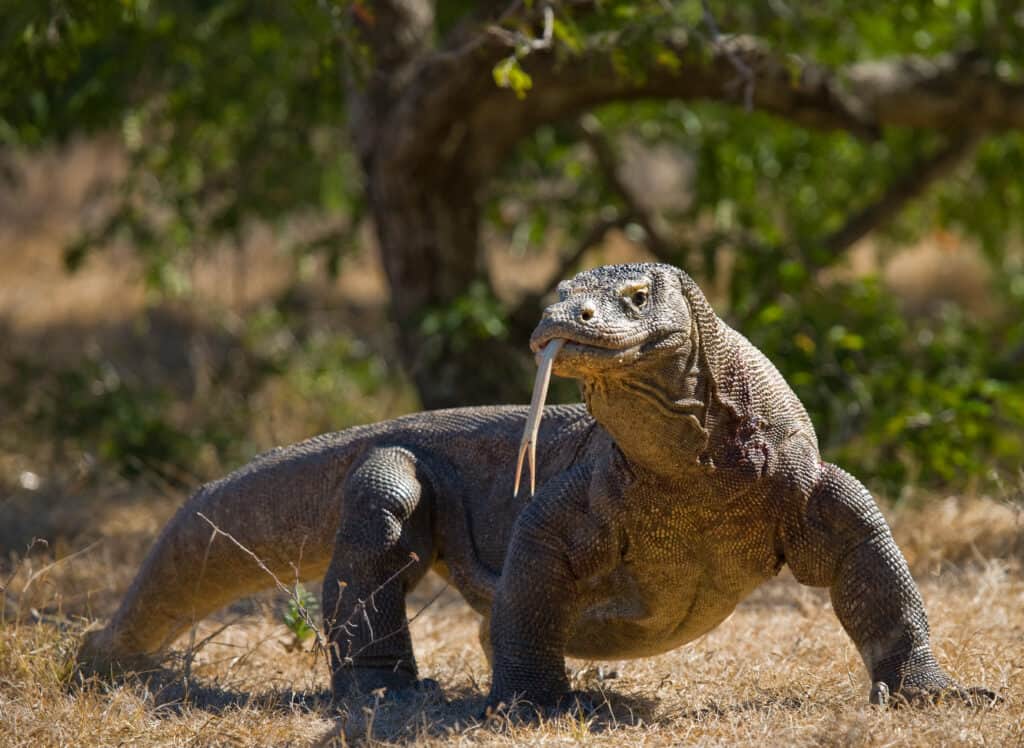
Large Komodo Dragon moving through a field
©GUDKOV ANDREY/Shutterstock.com
The largest lizard in the world is the Komodo Dragon (Varanus komodoensis). They are capable of growing up to 10 ft, and the heaviest ever recorded weighed more than 300 pounds.
Komodo dragons are meat-eaters and are also quite fast for their size. They can run 13 mph, but kill most of their prey by stalking, and overpowering. These giant dragons are capable of eating 80 percent of their body weight, but if danger comes they will puke up their food to make themselves lighter, and quicker.
A bite from a Komodo dragon is extremely painful and can kill a person within hours. Their teeth are sharp and used for ripping flesh, and venom is secreted when they bite. Komodo dragons are as ruthless as mythical dragons. To find a mate males will fight by crashing into each other and trading tail whips. Juvenile dragons are sometimes cannibalized by larger lizards, so they cover themselves in excrement to avoid being eaten. These lizards live in a few Indonesian islands but are endangered.
Bonus: The Giant Girdled Lizard
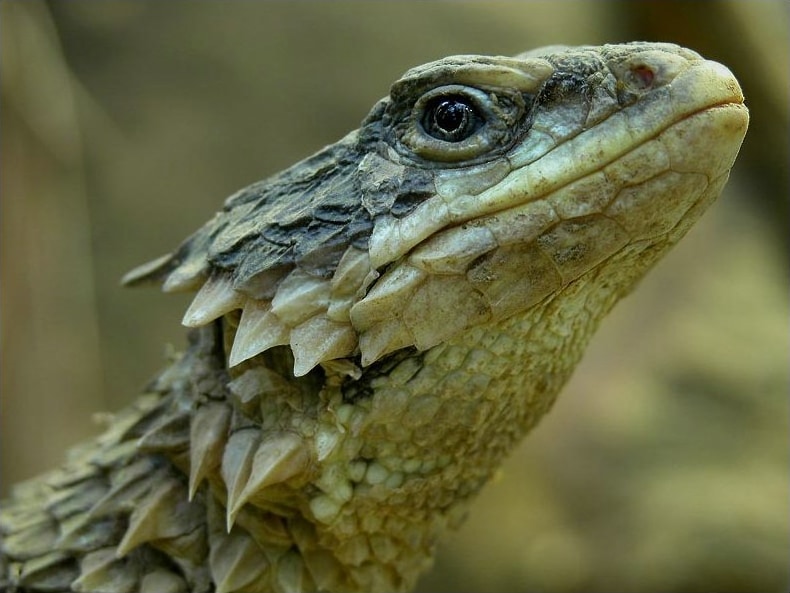
Did the giant girdled lizard, whose scientific name is
Smaug giganteus, inspire J.R. Tolkein when naming his fictitious dragon “Smaug” in
The Hobbit?
©Wilfried Berns / CC BY 2.5 – License
The giant girdled lizard has several other names: sungazer, giant dragon lizard, ouvolk, and giant zonure. But perhaps its most interesting name is its scientific one–Smaug giganteus. Does that name remind you of anything? If you’re familiar with the literary classic “The Hobbit,” you’ll remember that the giant dragon who slept in a cavern filled with gold was named Smaug. Coincidence?
The giant girdled lizard is yet another lizard that resembles a dragon to the point that “dragon” is in one of its multiple names. Native to South Africa, this lizard sports armor-like scales, a long pair of occipital spines, and large keeled caudal spines. The “sungazer” name alludes to its characteristic sunbathing behavior. This dragon-like insectivore is also a burrower.
Summary of 9 Incredible Lizards That Look Like Dragons
| Index | Name | Location | Special Features |
| 1 | The bearded dragon (Pogona) | Australia | Jaw spikes, reddish brown upper body scales, and pale underbelly |
| 2 | Chinese water dragon (Physignathus cocincinus) | Burma, Cambodia, China, Laos, Thailand, and Vietnam. | Prominent eye ridges, light green scales, dotted with pale protuberances around the mouth and lower jaw, low dorsal crest covering head and torso |
| 3 | Draco Lizards (Draco volans) | The Philippines | Leaf-like protuberances in yellow-green from a slender gray body, slender limbs, and head covered in green scales |
| 4 | Red-eyed crocodile skink (Tribolonotus gracilis) | New Guinea | Rough brown scales, pale underbelly, eyes surrounded by a red pigment |
| 5 | Caiman lizards (Dracaena guianensis) | South America | Scales in dark red (head) and forest green (body) |
| 6 | Armadillo Girdled Lizards (Ouroborus cataphractus) | South Africa | Prominent bony, regularly arranged scales in black, gold, pale sandstone |
| 7 | Sailfin water lizards (Hydrosaurus pustulatus) | The Philippines | Dark scales, neck and dorsal spikes, tail crest, cream-colored abdominal scales speckled with black |
| 8 | Marine iguana (Amblyrhynchus cristatus) | The Galapagos | Rough scales in black, blue, bronze, red, heavy claws, dorsal spikes |
| 9 | Komodo Dragon (Varanus komodoensis) | Komodo, Indonesia | Immense size (10 feet on average), heavy limbs, gray scales, sharp teeth |
The photo featured at the top of this post is © Ken Griffiths/Shutterstock.com
Thank you for reading! Have some feedback for us? Contact the AZ Animals editorial team.




